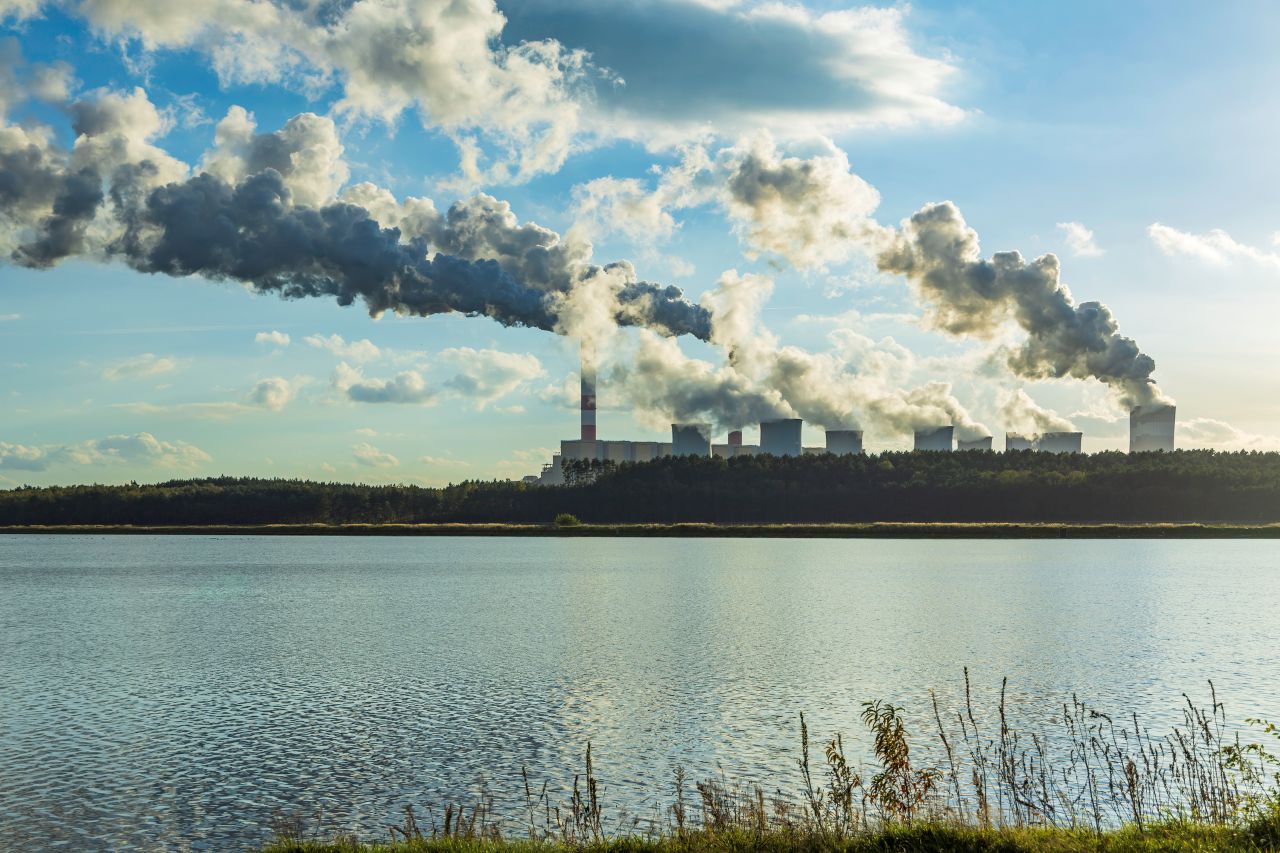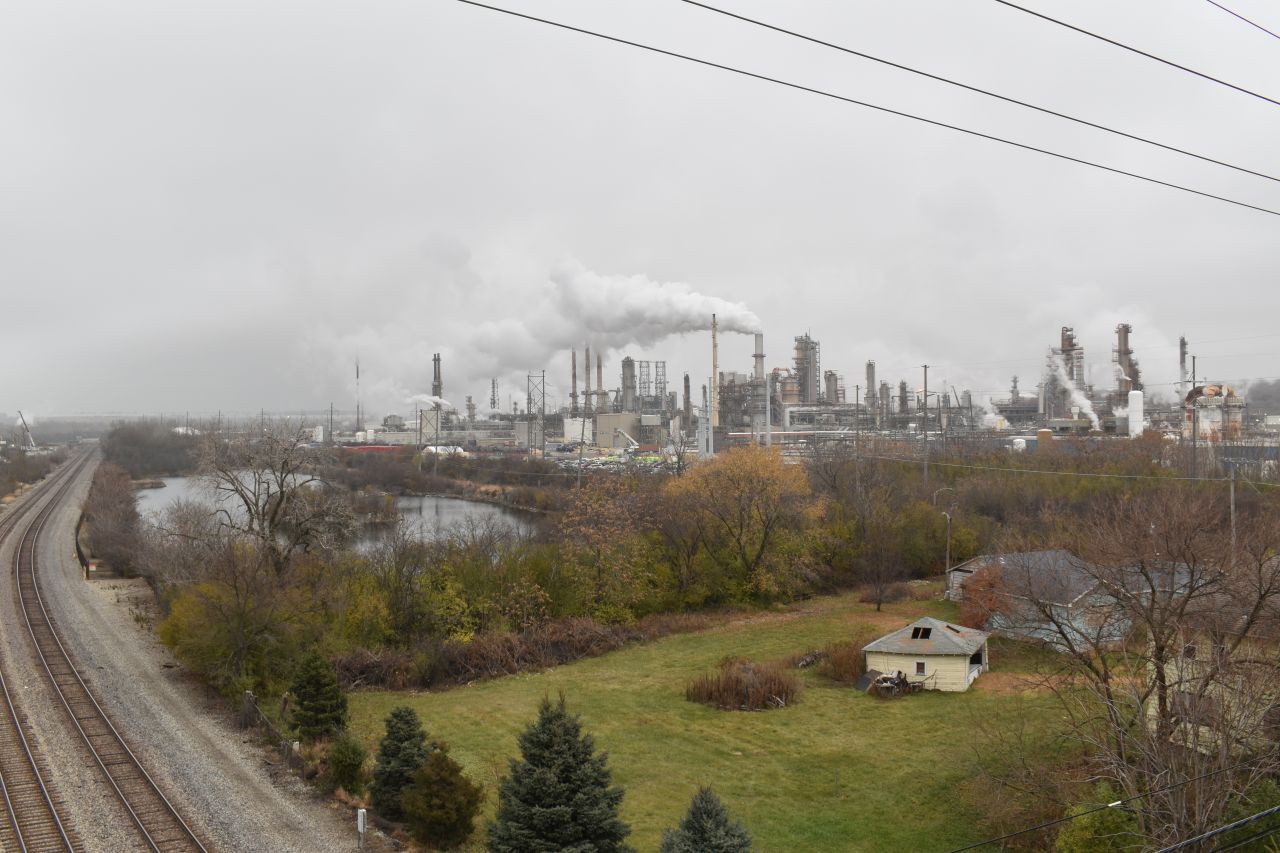After securing $135 million in tax breaks, pipeline company plans massive ethane “cracker” in Southeast Texas

NEDERLAND, Texas – On a busy highway between Beaumont and Port Arthur in Southeast Texas, Dallas-based pipeline company Energy Transfer is proposing to build a massive new facility that would turn the components of natural gas into the basic chemicals used to make single-use plastics and other petrochemicals.
In October 2023, the Texas Commission on Environmental Quality (TCEQ) made a preliminary decision to approve an application for Energy Transfer, one of the largest exporters of natural gas-based products in the world. But the state agency wants to see evidence the plant can meet air quality standards for fine particulate matter.
The proposed Nederland facility is one of a growing number of ethane “cracker” plants across the U.S., which separate or “crack” the component parts of natural gas to create ethylene, a building block for the plastics industry. In part because hydraulic fracturing has lowered the price of natural gas, the number of “cracker” plants has risen to more than 30 today. Energy Transfer’s Nederland Ethane Cracker is one of seven proposed new facilities and eight proposed expansions, with construction already underway on three more projects, according to public records and company announcements in the Oil & Gas Watch database.
Energy Transfer’s planned facility has been awarded $134.6 million in tax breaks over 10 years by the local Nederland Independent School District (assuming 2024 tax rates). In exchange, the company said the project will create 25 jobs and that it will spend more than $1.8 billion building the plant.
Despite being heavily subsidized by taxpayers, many of these new “cracker” plants have released vast amounts of illegal pollution and experienced explosions, flaring, chemical releases, and other industrial “upsets” that have disturbed local residents, according to an Environmental Integrity Project (EIP) report on the issue.
For example, a new Shell ethane cracker in Monaca, Pennsylvania, northwest of Pittsburgh, suffered at least 51 malfunctions and was hit with 16 state air pollution violation notices from January 2022, and the end of June 2023, when the plant was in its early phase, according to state records examined for EIP’s report. The problems included the release of high levels of cancer-causing benzene from the plant’s wastewater plant, as well as black smoking flares and loud roaring sounds that woke neighbors.
In Texas, Energy Transfer is proposing to build the cracker plant on undeveloped land adjacent to its Nederland Terminal, a crude oil and natural gas liquids storage facility with 84 tanks beside the Neches River that also exports natural gas liquids. Natural gas liquids are components of natural gas and include ethane, propane, butane, isobutane, and gasoline produced alongside natural gas rather than derived from petroleum.

A new ethane cracker facility at the site would allow Energy Transfer to not only export natural gas liquids but also to break them down into more commercially valuable substances, such as ethylene and propylene.
“These molecules are important petrochemicals used in a variety of products including plastics and textiles,” Energy Transfer wrote in its application for local tax breaks.
According to details in Energy Transfer’s air permit application available on the Oil & Gas Watch database, the facility could emit more than 8,500 tons per year of harmful air pollutants, including smog-forming nitrogen oxides and volatile organic compounds; fine particulates, which can cause heart and asthma attacks; sulfur dioxide, which can cause lung issues and acid rain; and toxic carbon monoxide.
The “cracker” would also emit more than 5.1 million tons per year of greenhouse gases – mostly carbon dioxide – roughly equivalent to the emissions from 1.24 coal-fired power plants per year or more than 1 million gasoline-powered cars and trucks driven for a year.
Terry Stelly, a Nederland resident and president of Southeast Texas Clean Air and Water, described the facility’s carbon dioxide emissions as “way out of hand.”
“Five million tons annually? Come on guys,” Stelly said.
Stelly, who grew up in the area and attended Lamar University in Beaumont, spent his career as an ecosystem biologist for the Texas Parks and Wildlife Department. He said land along the Neches River, now mostly occupied by energy and chemical companies, was mostly rice farms and marshes where people would set up blinds to hunt ducks. Along with Energy Transfer’s proposed ethylene cracker, a company called OCI is planning to build an ammonia plant nearby.
“You’d see ducks, waterfowl, other wading birds,” Stelly said. “And now what do you see? You see Energy Transfer and OCI being constructed, so we’re losing habitat.”
Roughly 25,000 people live within three miles of the proposed facility, with 24 percent of these people considered low income, and 22 percent identify as people of color, according to U.S. EPA and U.S. census data.

On Sept. 23, 2024, the TCEQ notified Energy Transfer that it must submit a new air quality analysis to show whether its air pollution would meet a more stringent national air quality standard for fine particulate matter. In February 2024, the U.S. Environmental Protection Agency strengthened the annual standard for fine particulate matter by lowering it from 12 micrograms per cubic meter to 9 micrograms per cubic meter.
According to a TCEQ memo, Energy Transfer’s air quality analysis for its proposed Nederland plant, which was submitted before the EPA rule change, predicted the new facility would result in an annual average concentration of 10.9 micrograms per cubic meter at the point of greatest impact, which would exceed the new standard.
The TCEQ had originally given Energy Transfer 30 days after Sept. 23 to provide a new air quality analysis. On Thursday, TCEQ media relations specialist Ricky Richter said the agency extended that deadline but did not specify for how long.
In a comment letter filed Nov. 30, 2023, the Environmental Integrity Project and Lone Star Legal Aid presented evidence that Energy Transfer’s proposal does not meet Clean Air Act standards requiring the plant to use sufficient pollution controls.
The groups cited examples of similar facilities that achieved lower emissions than Energy Transfer is proposing. For example, one furnace at the Energy Transfer project would emit more carbon monoxide per hour than the furnace at a similar plant, the LACC Ethylene Plant in Westlake, Louisiana. The Energy Transfer furnace would also release more particulate matter and volatile organic compounds per hour than furnaces at ExxonMobil’s Baytown ethylene plant near Houston.
According to Energy Transfer’s air quality analysis, the plant’s emissions of nitrogen oxides would affect neighborhoods within a 17-mile radius, including areas such as Port Arthur, Beaumont, and Orange, which have much higher poverty rates than Nederland, a relatively white and affluent area compared to its neighbors.
In Port Arthur, for example, people of color make up more than 70 percent of the population and nearly 27 percent of residents live below the poverty line. The city is already home to some of the oldest and largest refineries in the U.S. – including those run by Motiva, Valero, and Total, which release large amounts of air pollution.
Some people living near the proposed ethane cracker work for the oil and gas industry and do not oppose the plant. Jay Esclovon, for example, who lives about a mile from the site, works for a company that fabricates heavy-duty bolts used in oil and gas facilities.
While Esclovon said he’d prefer the facility to be farther from his home, he is not opposed to its construction and described air pollution from the plant as a “necessary evil.” He said that for people who oppose energy projects like this, he would “want to see them go one month without using any product made from oil and gas.”
John Beard, who worked in an ExxonMobil refinery before founding the environmental justice group Port Arthur Community Action Network, said it is extremely difficult for Port Arthur residents to get jobs in facilities like Energy Transfer’s. Most companies hire through networks of existing employees, many of whom are white and live in surrounding towns, far from the plants where they make their living, he said.
“We get stuck with all the pollution, all the after-effects, but everybody else gets the benefit, and that is simply unacceptable,” Beard said.
Lead photo: A flare burns behind undeveloped land in Nederland, Texas, where Energy Transfer proposes to build its new ethane cracker. Photo by Brendan Gibbons, Oil & Gas Watch News.















